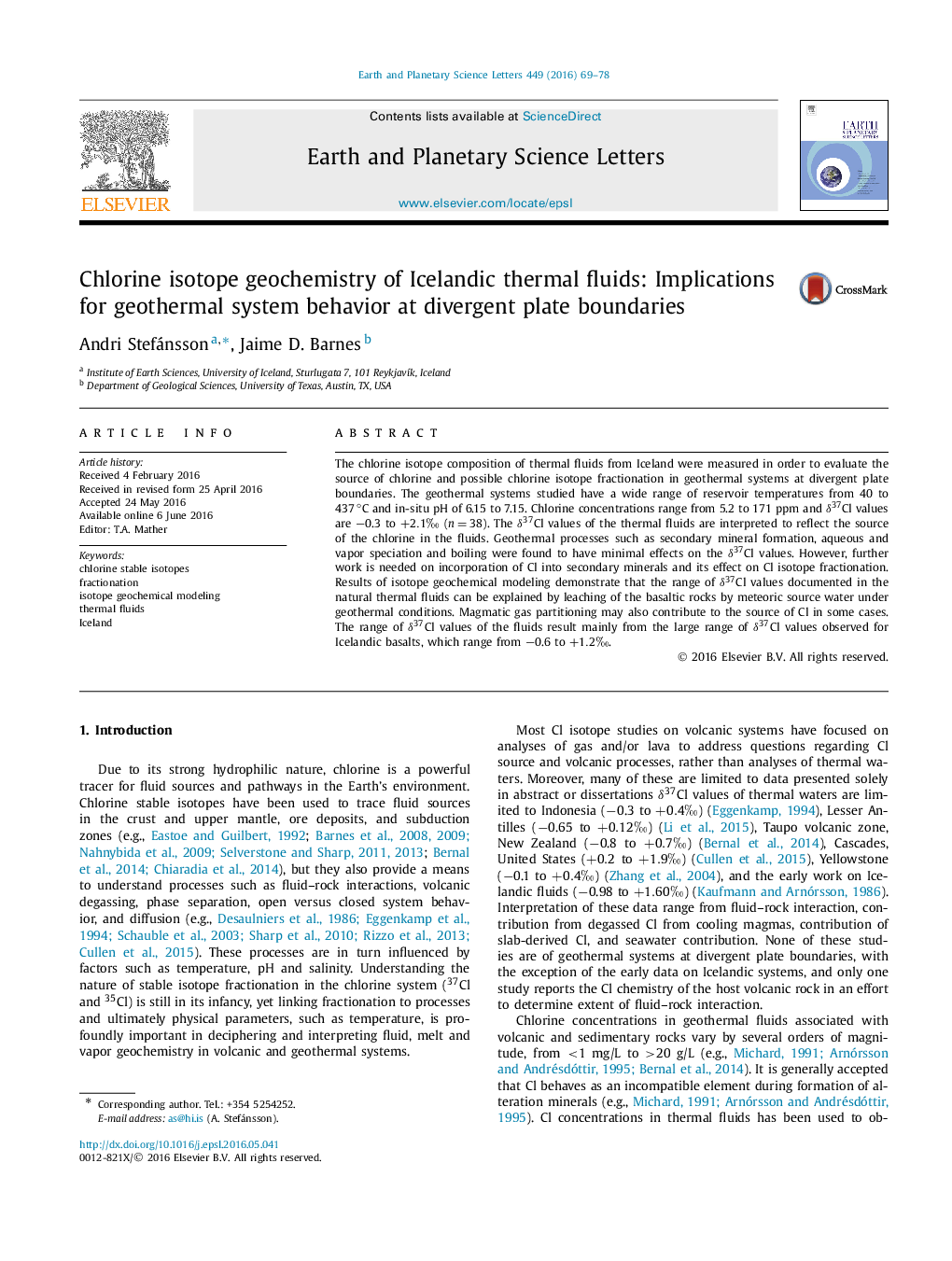| Article ID | Journal | Published Year | Pages | File Type |
|---|---|---|---|---|
| 6427365 | Earth and Planetary Science Letters | 2016 | 10 Pages |
â¢The δ37Cl values of thermal fluids at the Icelandic range from â0.3 to +2.1â°.â¢The source of Cl in thermal fluids is rock leaching and the source water.â¢Secondary processes have limited effects on the δ37Cl and Cl content.
The chlorine isotope composition of thermal fluids from Iceland were measured in order to evaluate the source of chlorine and possible chlorine isotope fractionation in geothermal systems at divergent plate boundaries. The geothermal systems studied have a wide range of reservoir temperatures from 40 to 437â°C and in-situ pH of 6.15 to 7.15. Chlorine concentrations range from 5.2 to 171 ppm and δ37Cl values are â0.3 to +2.1â° (n=38). The δ37Cl values of the thermal fluids are interpreted to reflect the source of the chlorine in the fluids. Geothermal processes such as secondary mineral formation, aqueous and vapor speciation and boiling were found to have minimal effects on the δ37Cl values. However, further work is needed on incorporation of Cl into secondary minerals and its effect on Cl isotope fractionation. Results of isotope geochemical modeling demonstrate that the range of δ37Cl values documented in the natural thermal fluids can be explained by leaching of the basaltic rocks by meteoric source water under geothermal conditions. Magmatic gas partitioning may also contribute to the source of Cl in some cases. The range of δ37Cl values of the fluids result mainly from the large range of δ37Cl values observed for Icelandic basalts, which range from â0.6 to +1.2â°.
